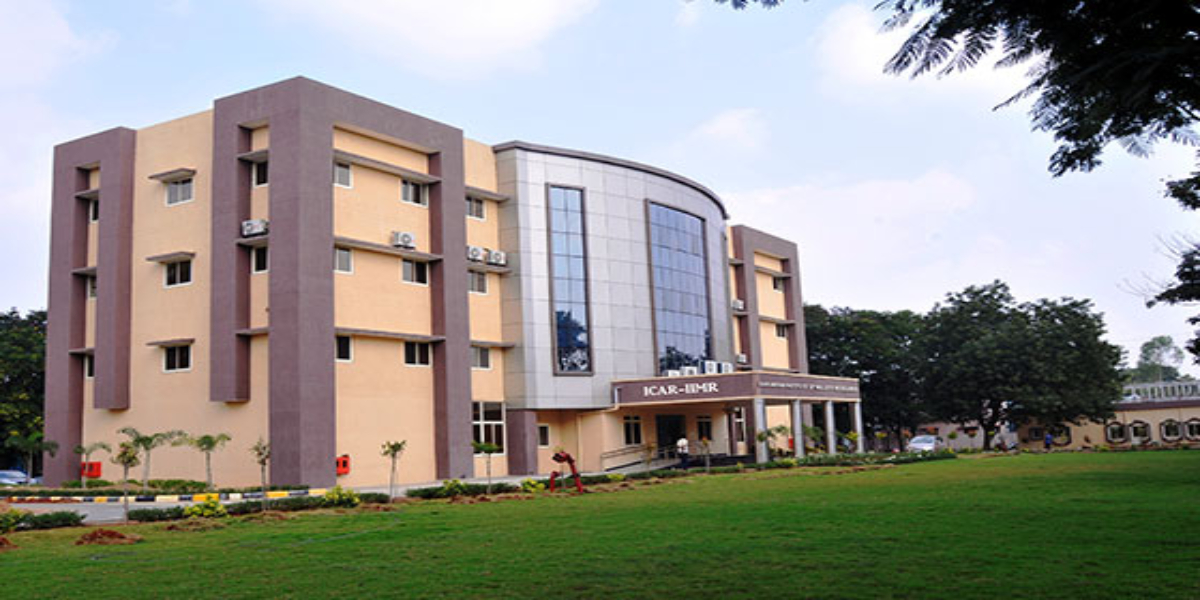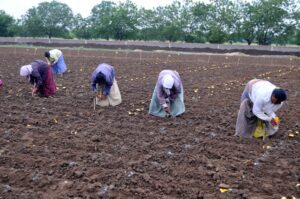Around 400 start-ups have approached the IIMR, which is engaged in basic and strategic research on millets, for collaboration.

IIMR is also developing noodles in collaboration with Britannia Industries. (Supplied)
While Union Finance Minister Nirmala Sitharaman was delivering her Budget speech in Parliament on Wednesday, 1 February, people at the Indian Institute of Millets Research (IIMR) Hyderabad were not expecting anything related to them. But, there was a surprise for them.
Sitharaman first said India was the largest producer and second-largest exporter of “Shree Anna” (referring to millets) in the world.
“We grow several types of ‘Shree Anna’, such as jowar, ragi, bajra, kuttu, ramdana, kangni, kutki, kodo, cheena, and sama. These have a number of health benefits, and have been an integral part of our food for centuries,” she said.
“I acknowledge with pride the huge service done by small farmers in contributing to the health of fellow citizens by growing these ‘Shree Anna’,” said Sithraman in her budget speech.
And then came the surprise for the people at IIMR.
“Now, to make India a global hub for ‘Shree Anna’, the Indian Institute of Millet Research, ideally the Indian Institute of Shree Anna Hyderabad, will be supported as a Centre of Excellence for sharing best practices, research and technologies at the international level,” said the finance minister.
“People from all over the country had their eyes and ears on the television screen. Thus, the mention of IIMR in the Union Budget gave us a boost as well as happiness at being recognised in Parliament,” IIMR Director CV Ratnavathi told South First.
“We have been working towards the development and research of various types of millets for more than 50 years. Most of the people in our country do not know about the institution, but that will change, thanks to the budget speech,” she said.
The Indian Institute of Millets Research (IIMR), located at Rajendranagar in Hyderabad, is an agricultural research institute engaged in basic and strategic research on sorghum and other millets under the Indian Council of Agricultural Research (ICAR).
IIMR coordinates and facilitates millets research at the national level through the All India Coordinated Research Projects on Millets, Pearl Millet, and Small Millets, and provides linkages with various national and international agencies.

IIMR develop technologies that can help farmers cultivate millets more efficiently and effectively. (Supplied)
It was founded in 1958 under the Project on Intensified Research on Cotton, Oilseeds, and Millets (PIRCOM), and has been engaged in research on important dryland crops such as sorghum, castor, groundnut, pigeon-pea and cotton, as well as sorghum-based cropping systems.
The institute was in 2014 upgraded as the ICAR-Indian Institute of Millets Research.
The IIMR conducts research in various areas, including agronomy, plant breeding, physiology, genetics, and biotechnology.
“We are doing the research with the goal of improving the livelihoods of farmers and ensuring food security for the growing population of India,” said Ratnavathi.
She added that the institution also works to develop technologies that can help farmers cultivate millets more efficiently and effectively.
It also collaborates with other institutions, both in India and abroad, to promote the scientific cultivation of millets and to transfer knowledge and technology to farmers.
“Millets constitute nutrients which can be easily available, and many states have started to see the benefit which millets brings to the general public through its product constituents,” said Ratnavathi.
Ratnavathi said that IIMR being an institution whose major work depends on a food product which everyone has now started to look towards for its cost efficiency but nutrient benefits, many state governments and start-ups have started to collaborate with them.
“Odisha, which is rice-dependent, has started to focus on millet, and we are collaborating with them. We are also collaborating with various states such as Andhra Pradesh and Maharashtra for their food programmes,” said Ratnavathi.
She added that around 400 start-ups have approached IIMR for collaborations.
“When people are thinking about their health and food consumption, they are moving towards millet. Apart from startups, we are also collaborating with big industries,” said Ratnavathi.
“Our consumptions of noodles were from wheat, but now we are collaborating with Britannia Industries for the production of noodles made out of millets,” she added.
Ratnavathi said most didn’t know, but 2023 was being celebrated as the International Year of Millets (IYM).
“Recognising the enormous potential of millets, which also aligns with several UN Sustainable Development Goals (SDGs), the Central government has prioritised millets,” she explained.
“In April 2018, Millets were rebranded as ‘Nutri Cereals’, followed by the year 2018 being declared as the National Year of Millets, aiming at larger promotion and demand generation,” she added.
Fair-cum-exhibitions for millets are going to be organised in Andhra Pradesh, Bihar and Madhya Pradesh.
The Food Safety and Standards Authority of India (FSSAI) will organise Eat Right Melas in Punjab, Kerala, and Tamil Nadu.
In India, millets are primarily a kharif crop, requiring less water and agricultural inputs than similar staples.
Millets are important by the apparent virtue of their mammoth potential to generate livelihood, increase farmers’ income, and ensure food and nutritional security all over the world.
Millets are also an integral part of the G20 meetings, and delegates are expected to be given a true millet experience through tasting, meeting farmers, and interactive sessions with start-ups and FPOs.

Jul 26, 2024

Jul 26, 2024

Jul 26, 2024

Jul 25, 2024

Jul 25, 2024

Jul 25, 2024